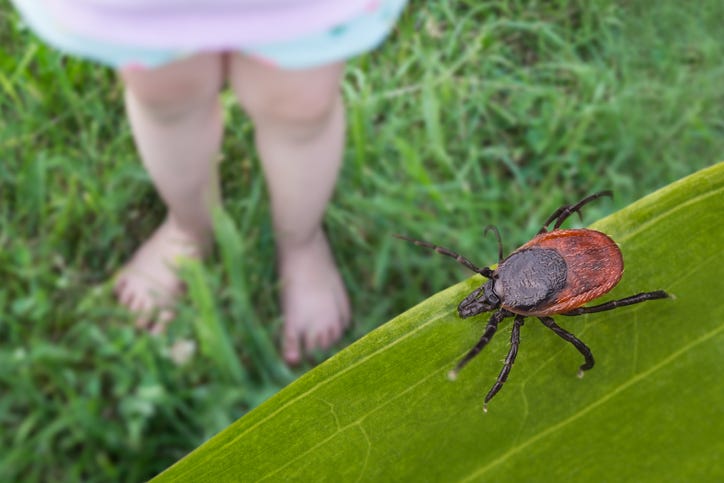
(WWJ) State health officials say tick-borne diseases are increasing across Michigan as the weather warms — but there are some simple steps you can take to avoid them.
The Michigan Department of Health and Human Services (MDHHS) says ticks can be active anytime the temperature gets above 40° F, and the best way to avoid Lyme disease and anaplasmosis is to avoid being bit by a tick.
And, if you do find a tick on your body, get it off of you ASAP!
Said Natasha Bagdasarian, MDHHS chief medical executive, in a news release Wednesday: “Michigan residents who find a tick attached to their body should promptly remove it and monitor their health. If they begin to experience fever, rash, muscle or joint aches or other symptoms, they should consult a medical provider.”
MDHHS suggests that Michigan residents and visitors take the following precautions while enjoying the outdoors this spring and summer:
Avoid tick-infested areas.
• Ticks live in grassy, brushy and wooded areas.
• Walk in the center of trails to avoid contact with overgrown grass, brush and leaf litter at trail edges.
• Protect pets! Dogs and cats can come into contact with ticks outdoors and bring them into the home. Talk with your veterinarian about the best tick prevention products for your pets.
Use insect repellent.
• Apply an EPA-registered repellent on exposed skin. Find a repellent product that is right for you.
• Treat clothes (especially pants, socks and shoes) with permethrin, which kills ticks on contact or buy clothes that are pre-treated. Do not use permethrin directly on skin.
• Always follow the manufacturer’s instructions when applying repellents.
Perform daily tick checks.
• Always check for ticks on yourself and your animals after being outdoors, including in your own wooded yard.
• Inspect all body surfaces carefully and remove attached ticks with tweezers.
• To remove a tick, grasp the tick firmly and as closely to the skin as possible. With a steady motion, pull the tick’s body away from the skin. Cleanse the area with an antiseptic.
Bathe or shower.
• Bathe or shower as soon as possible after coming indoors (preferably within two hours) to wash off and more easily find ticks that might be crawling on you.
• Wash clothing in hot water and dry on high heat to kill ticks in clothing.
Signs and symptoms of tick-borne disease typically begin one to two weeks after a tick bite, often after being in wooded or brushy areas where ticks commonly live, MDHHS said Early symptoms can be non-specific and include fever or chills, rash, headache, fatigue and muscle aches. Early treatment with appropriate antibiotics can decrease the risk of serious complications.
Lyme disease, caused by the bacterium Borrelia burgdorferi, is the most common tick-borne disease in Michigan. Anaplasmosis, caused by the bacteria Anaplasma phagocytophilum, is the second most common tick-borne disease in Michigan and cases are increasing, particularly in the Upper Peninsula, officials say.
Both Lyme disease and anaplasmosis are transmitted by the blacklegged or deer tick. The blacklegged tick is well-established in parts of both the Lower Peninsula and the U.P., and has been expanding its range over the year. [See the latest Michigan ticks report].
Have you seen a tick? MDHHS can help to identify ticks you may encounter outdoors. Residents can email photos of ticks to MDHHS-Bugs@michigan.govfor identification or submit ticks to MDHHS for identification. For more information on how to submit your tick and/or photos, and more on ticks and Lyme disease visit Michigan.gov/Lyme.
